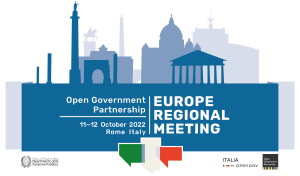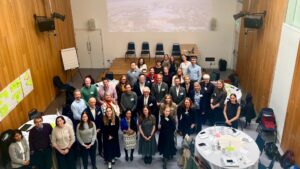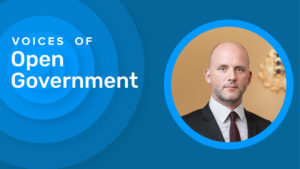
Europe Regional Meeting
The OGP Europe Regional Meeting will take place on October 11-12, 2022 in Rome, Italy.
2022-2024
Action Plan 6
Estonia’s sixth OGP action plan improved the framework for co-creative and evidence-based policymaking within the public sector. While civil society organizations actively contributed to action plan implementation, opportunities remain to improve the depth and timeliness of government feedback. The Government Office’s central role effectively supported commitment ambition and completion levels. However, broadening the circle of government implementers could help build stronger ownership of future OGP action plans.
2025, IRM Report, Web page
2025, IRM Report, Web page
2024, Research Product, Web page
2023, IRM Report, Web page
2023, IRM Report, Web page
2023, Report Comments, Web page
2023, IRM Report, Web page
2023, Report Comments, Web page
2023, Web page
2022, Action Plan, Web page
2022, IRM Report, Web page
2021, IRM Report, Web page
2021, Report Comments, Web page
2021, IRM Report, Web page
2021, Report Comments, Web page
2021, Self Assessment, Web page
2020, Action Plan, Web page
2019, IRM Report, Web page
2019, Report Comments, Web page
2019, IRM Report, Web page
2019, Report Comments, Web page
2018, Self Assessment, Web page
2018, Action Plan, Web page
2018, IRM Report, Web page
2018, Report Comments, Web page
2018, Letter, Web page
2017, Letter, Web page
2017, IRM Report, Web page
2017, IRM Report, Web page
2016, Self Assessment, Web page
2016, Action Plan, Web page
2016, IRM Report, Web page
2016, IRM Report, Web page
2015, Action Plan, Web page
2015, IRM Report, Web page
2015, Action Plan, Web page
2015, Self Assessment, Web page
2013, Research Product, Web page
The following variables answer the question “Did this commitment open government?“, and focus on how government practices have changed as a result of the commitment’s implementation.
No IRM data
Pending IRM Review
Starred commitments in OGP are one of the ways the IRM designates promising reforms. The graph below shows where the major areas for improvement in action plan design and implementation should take place based on past action plans.
Stars (Global average 7%)
Focus on implementation
Focus on design
Pending IRM review
No IRM data
Focus on objectives and impact (ambition/potential impact)
Focus on relevance to open government
Focus on verifiability
This table shows: 1) the level of public influence during the development and implementation of OGP action plans, 2) whether consultations were open to any member of the public or only to those invited; and 3) whether a forum existed that met regularly.
Participation was closed
Participation was open to any interested party
No IRM data
Forum
Pending IRM review
Collaborate: Iterative dialogue and public helped set agenda
Involve: Government gave feedback on public inputs
Consult: Public gave input
Inform: Government provided public with information on plan
The data below is drawn from the 2019 OGP Global Report. You can view and learn more about the report here.
This section captures how each OGP member can play a leadership role, based on IRM-based findings and third-party scores. This list does not cover all of open government and OGP members are not required to take any action.
These are recommendations on the role that each OGP member might play in each policy area. The recommendations are derived from a combination of the IRM-based findings and third-party scores.
Reflect the performance of commitments in a particular policy area, as assessed by the IRM.
(NC) No Commitments
(CA) Commitment(s) in the policy area.
(IR) IRM-Reviewed: At least one IRM-assessed commitment.
(C) Was Complete: At least one commitment was substantially or fully completed.
(A) Was Ambitious: At least one commitment with moderate or transformative potential impact.
(ER) Showed Early Results: At least one commitment opened government in a “Major” or “Outstanding” way.
Reflect “real-world” performance, i.e., performance outside of the OGP framework. Scores are comprised of various indicators collected by respected organizations.
IRM-Based Findings
IRM-Based Findings
IRM-Based Findings
IRM-Based Findings
IRM-Based Findings

The OGP Nordic+ group met in April 2024 and again during Open Gov Week to discuss how to advance fiscal transparency and enhance participation in fiscal policy. From these discussions, four key lessons emerged, each illustrated with practical examples from various countries.

Meet Kai, the Executive Director of the Network of Estonian Nonprofit Organizations (NENO). Kai was a prominent voice at the 2023 OGP Global Summit in September 2023 and in this month’s Faces of Open Gov, she shares her views on…

In this month's Faces of Open Government feature, meet Liia Hänni, a trailblazer in open government and e-democracy.
La Semana de Gobierno Abierto (OGW por sus siglas en inglés) se celebra en mayo de cada año para reunir a los gobiernos y la sociedad civil y encontrar soluciones a los problemas más apremiantes que enfrentan las comunidades a…

This September, Estonia will host the 8th OGP Global Summit. Explore Estonia’s development through six action plans, and how the government has been able to institutionalize co-creation, public participation, transparency and openness at the local level.

In this episode, Taimar Peterkop shares the history of Estonia's resilience against authoritarianism and its plan to drive open government initiatives at the OGP Global Summit.
Click here for more information about the Open Government Partnership's terms of use.
Terms & Conditions Close